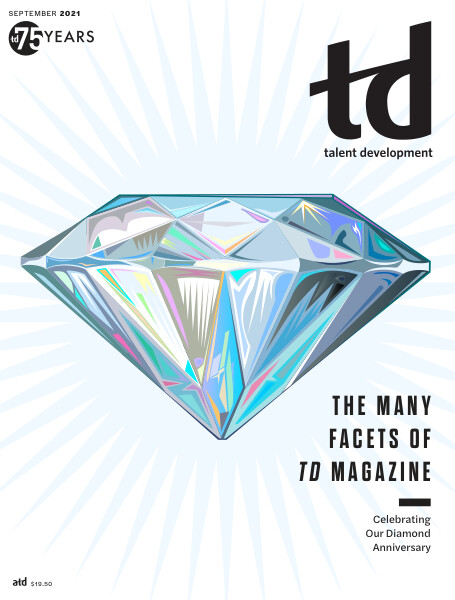TD Magazine Article
There Is Strength in a Neurodiverse Workforce
Foster inclusion of neurodivergent individuals within the workplace.
Wed Sep 01 2021

As organizations continue to prioritize diversity, equity, and inclusion in the workplace, it's essential that they make neurodiversity a core part of those efforts. In a June 2021 BenefitsPro article, William T. Rolack Sr. and Monique Gonggrijp-Bello explore the competitive advantage of a neurodiverse workplace, including greater creativity and innovation.
"Diversity and inclusion breed innovation—whether in the context of gender, race, sexual orientation, or cognitive functioning," they write. "The melding of a variety of backgrounds fuels unique perspectives and ideas to manifest, coming together to pave new paths and increase efficiency. The very definition of \[neurodiversity\]—diversity of thinking styles and abilities—is especially important for innovative decision-making."
The authors explain that companies have been missing out on the benefits that come from hiring neurodivergent employees, such as individuals with autism, dyslexia, and attention deficit hyperactivity disorder. They cite that up to 20 percent of the population can be classified as neurodivergent.
"People on the spectrum often have a propensity to think outside the box and can be extremely creative. Their tendency to operate in a black and white manner lends itself to detail-oriented roles," Rolack and Gonggrijp-Bello add.
For employers that want to prioritize neurodiversity within their DEI initiatives, Rolack and Gonggrijp-Bello suggest they adjust the interview process to help neurodivergent individuals showcase their talents, expand support for neurodiversity across all branches and levels of the company, and understand neurodiversity initiatives as an ongoing process—not a one-and-done project. Talent development professionals are well positioned to help.
They can build and sustain organizational support by conducting company-wide or team-specific training to ensure all staff understand the potential needs of employees who are neurodivergent. Tailor the training sessions to specific roles. For example, train supervisors on communication strategies that will help them manage a neurodiverse team, and provide neurodivergent employees with customized training and support to help them work at their full potential.
Rolack and Gonggrijp-Bello also recommend establishing a mentoring program to onboard neurodivergent employees. A new employee with autism, for example, can benefit from having a mentor or sponsor who can assist them with navigating some of the unspoken social norms that exist within any company. Through such strategies, talent development professionals increase an organization's inclusivity while harnessing the benefits of a neurodiverse workforce.

